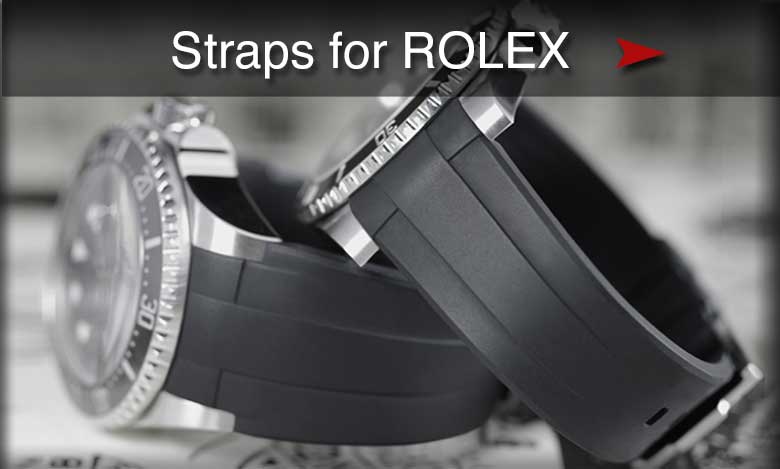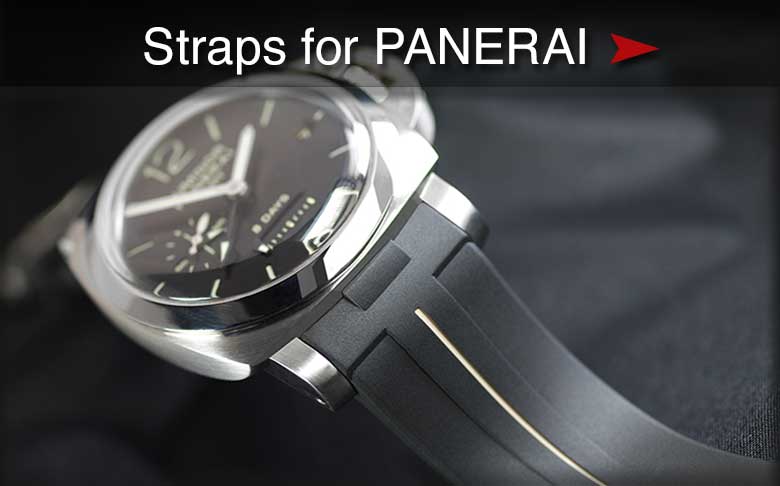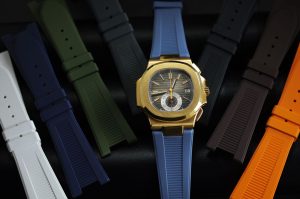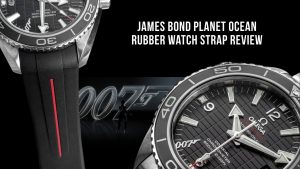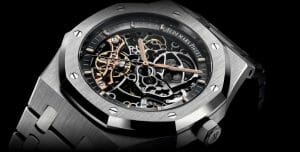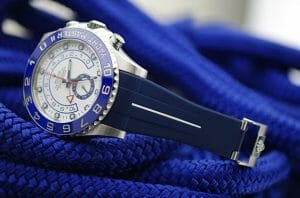
Any legitimate Rolex Datejust II review requires us to look at where the Datejust came from before we can appreciate the Datejust II. Hans Wilsdorf introduced an early form of the Datejust in 1926. However it was not until Rolex celebrated its 40th anniversary that Rolex officially wanted to commemorate the occasion with a timepiece that was different than any other timepiece on the market. So, in 1945 Rolex launched the Datejust with a 36mm size. It was the first self-winding, water resistant wristwatch with a date window on the dial. The original model came with an all new 5-link Jubilee bracelet. Therefore, Rolex named this first version Datejust the Jubilee Datejust reference 4467. It was launched with a fluted bezel in 18 karat yellow gold and had a Caliber 710 movement. This incredible achievement helped catapult the Rolex brand into one of the most recognizable in the world and the Datejust became its flagship timepiece.
Rolex made many changes to the Datejust over the years. It first launched the Stainless Steel version of the Datejust, and the two-tone “Rolesor” version with reference 5030 and 5031, respectively, in the 1950’s. With this new generation of Datejusts, Rolex introduced the caliber 1560 movement.
In 1970, Rolex launched a reworked Datejust with a caliber 3035 movement which featured the quickset date feature allowing users the ability to adjust the date without affecting the time.
Again, in 1988, Rolex enhanced the Datejust with a more precise performing caliber 3135. Rolex also added the scratch-resistant synthetic sapphire crystal to their timepieces.

The Rolex Datejust II History
Rolex redesigned the Datejust with a completely new model – the Datejust II in 2009. Although Rolex continued to make and produce the 36mm version Datejust, the Datejust II came with a larger 41mm size and a new caliber 3136 movement. Instead of adding the Jubilee bracelet, the new Datejust II came with the Rolex Oyster bracelet. The 36mm Datejust continued to come with the option of either the Oyster or Jubilee bracelet.
The Datejust II came with three reference models. The reference 116300 was an all stainless steel model. The 116334 combined stainless steel and white gold. The 116333 created the Rolesor look with yellow gold and stainless steel.
The Oyster bracelet on the Datejust II came with the more sporty looking 3-link bracelet with the new Oysterclasp. The Datejust II was noteworthy since it did not come with an all gold or pink gold version. Keeping with the masculine look, Rolex decided to focus on just Steel, white gold and Rolesor versions of the timepiece.
The Datejust II features a new 3136. The newer Datejust II was built for performance – with better shock absorption and support for extreme conditions. This new chronometer was at least 2 times more precise than the earlier version Datejust. Although the Datejust II was launched with great fanfare, Rolex cut the cord on this version in 2016, making it one of the shortest lived Rolex versions released.

The Rolex Datejust II Review
In 2009, Rolex’s launch of the Datejust II at Baselworld was an admission of sorts. Rolex was sending the message that the Datejust needed a more masculine design. So many timepieces for men were being developed at at minimum a 40 mm size starting point. Rolex had released some that were a whopping 44 mm. The 41 mm version was clearly more substantial and fit men with larger wrist sizes, and men who enjoyed a weightier version of the time honored Datejust.
Rolex also eliminated the all gold versions of the Datejust II which were probably considered too effeminate. Although two-tone yellow gold and stainless steel was allowed, pink gold was not allowed in the Datejust II.
Rolex decided to shun the Jubilee bracelet for this more masculine and sporty timepiece. Rolex clearly felt that the 3-piece oyster bracelet had more masculine lines.
Any reasonable Rolex Datejust II review shows evidence that the Datejust II was a big improvement for Rolex’s Datejust timepiece. People had been asking for a larger watch for the boardroom and Rolex did not disappoint with the Datejust II. With the popularity of more “masculine” Rolex timepieces taking front stage (such as the Submariner) Rolex needed a shot of testosterone to awaken the Datejust brand. This 41 mm version joins a family of Datejust timepieces that range in size from 28 mm all the way to 41 mm – giving Rolex shoppers a wide variety of sizes in this iconic model. Although the Datejust II is no longer being sold, the 41 mm version is still available from Rolex.

Rubber B has developed 5 exquisite bands for the Classic Rolex Datejust II – 41 mm. The pre-2016 version Rolex Datejust II case (41mm) and also model ref. 116334, are supported with Rubber B’s patented “Blocked Integration” engineering which incorporates solid inserts for a flawless, motionless flush mount to the watch case. The strap also supports the deployant buckle for the original Oyster bracelet version that came with the timepiece. only). NOTE: The Jubilee clasp is not compatible with this strap. To see the selection of various color options click here.
Just like all Rubber B products, these bands are made with 100% vulcanized rubber, containing no coatings, blends, or bondings. This ensures Rubber B bands will retain its designer look and feel Each band is made in Switzerland – the horological capital of the world.
